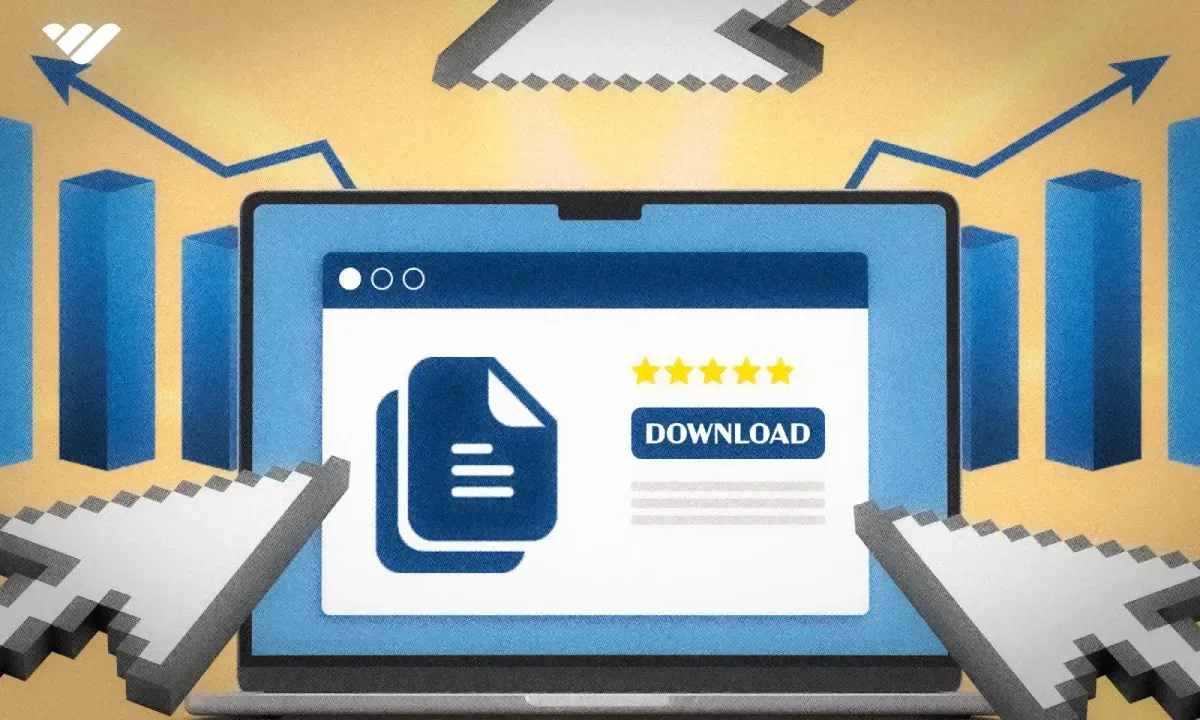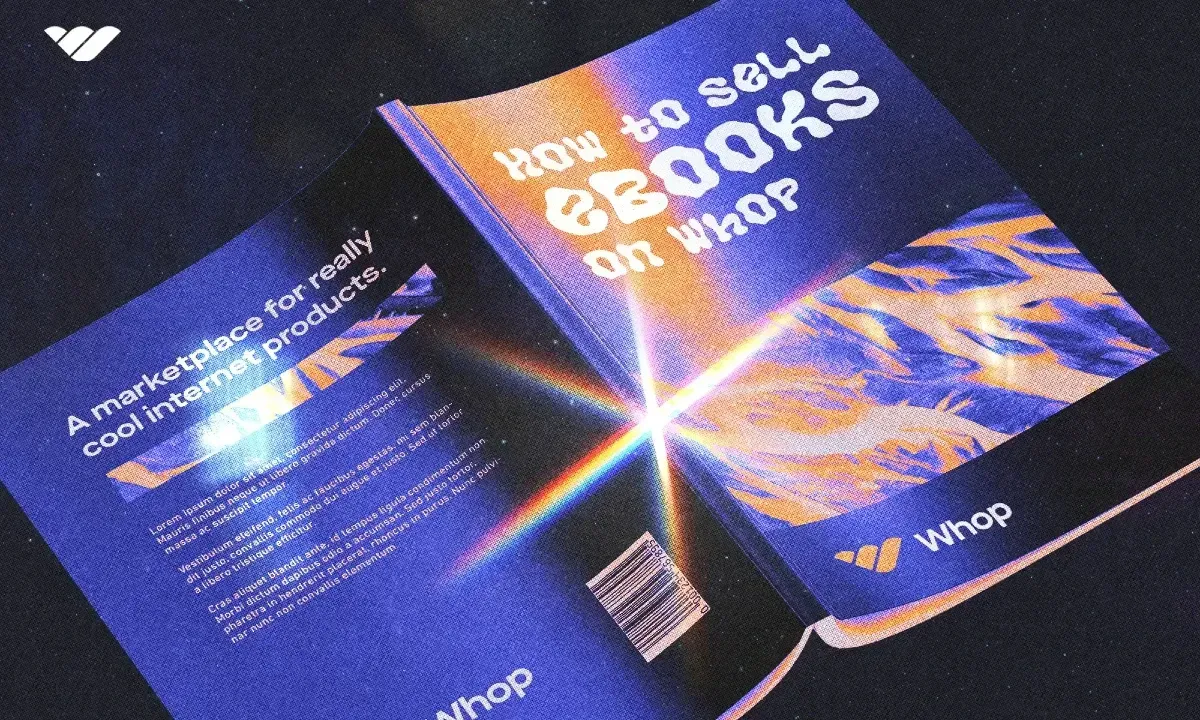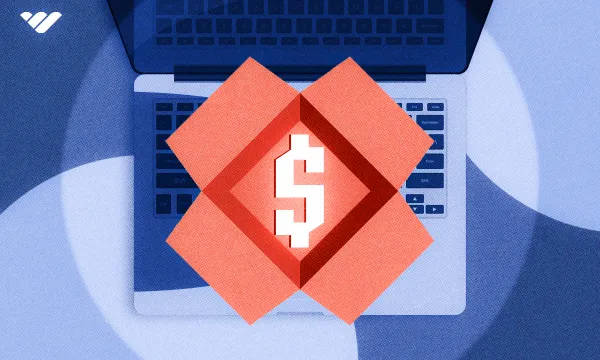Digital products are the lifeblood of the online economy, and ecommerce itself has become one of the most profitable (and easiest to enter) industries for entrepreneurs all over the world. Adults in just about every developed country are spending more and more every month purely on digital products, so it’s definitely worth getting yourself a slice of that pie.
In this guide, we’re going to look at why you should seriously consider selling digital products, then take you on a quick, easy-to-follow journey through the digital product creation process!
What are Digital Products?
A digital product is something you can make, store, and use on a device like a computer. You can share it using the internet or a direct network connection, and can take multiple forms including images, eBooks, videos, programs, and so on. Today, lots of things are regarded as digital products in their own right—trading bots, Notion templates, and online memberships all qualify.
Why Should You Be Selling Digital Products

One of the biggest reasons for the popularity of digital products is the fact that scaling is entirely painless. Compare that to a traditional physical product—for instance, a car. You’re going to ship a variety of different components from every corner of the earth, then assemble cars one after the other in a factory. The finished products then have to be shipped out a handful at a time.
If the popularity of your car skyrockets and you want to try and meet that demand, you need to ramp up the import of your components and figure out storage for all of them. On top of that, you’ll need to invest millions in expanding your production capabilities while also figuring out the logistics of getting so many new cars to their destinations.
Digital products, on the other hand, can be duplicated and multiplied infinitely. Whether you have two customers or two million, there’s zero workload in terms of scaling your product to meet that demand.
The ability to meet essentially unlimited demand with ease is a clear advantage for entrepreneurs who choose to go into digital products, but that’s not all. Research suggests that digital creators actually earn a whole lot more than content creators in 2024—check out this article if you’d like to know exactly how much you can make as a digital creator (spoiler: it’s a LOT).
Put simply, digital products are an almost perfect area to do business in. We already know that it’s easy to scale, but startup costs also tend to be pretty low (most creators start off by themselves on a single computer) and even though you’re probably going to ply a niche market, your reach is global if you’re using the right platforms.
How to Create a Digital Product in 6 Steps
Now that you know why it makes business sense to create a digital product, it’s time to look at how you can go about creating one! Whether or not you already have an idea for a digital product, these six steps will give you the best possible chance to get to market successfully.
#1. Research The Market
Your first order of business when entering the digital product business is to research the market, but how broadly you approach this task will depend if you’ve already got a couple of ideas or are in search of one.
If you don’t yet have an idea to work with, broad market research will help pinpoint different trends as well as market segments worth going into. You might compare the growth trends when it comes to online courses versus podcasts, for example, and decide to pursue one or the other based on the comparative market size. You might also notice that certain digital products are more dependent on host platforms than others, and decide to steer away.
Once you start understanding the overall digital product landscape, different possibilities will become apparent to you and you can start zooming in with your research, looking at what the existing product landscape is like in those niches. If you’ve already got a product idea, you can start here, investigating the competition and looking at pricing and marketing.
#2. Create a Target Persona
The creation of a target persona (or customer profile) is an extremely common exercise in business development, and shouldn’t be underestimated for its effectiveness. Say, for example, that your digital product idea is an app for people who run.
Now, when you start to research runners and start figuring out a persona, you’ll start to collect demographic and psychographic data. You’ll be able to put down an average income level, how often and for how long they run, what sort of social media they use, and plenty more—and each element will give you insights, such as at what level you can price your digital product, which channels to using in marketing, and so on.
However, you might also find out that “people who run” might mean more than everyday folks who jog around the block for a quarter of an hour. Amateur triathletes are a subset of the “people who run” group, but their persona is very different—they’ll earn three times what a jogger does on average, be a much more highly focused, motivated and competitive individual, be more tech savvy, and so on.
You’ll target the triathlete differently, price your app differently—and everything from your UI to the data you present and how your app works will be different if you choose the triathlete as your persona over the jogger.
#3. Identify Opportunities
If you didn’t have a product idea coming in, market research along with the development of personas in different market segments should have pointed you towards various opportunities or ideas for a digital product—and if you did, this is a great time to validate any early assumptions you made and pivot if required.
Market research and personas will tell you a lot about whether your idea is a good one, and looking at psychographic data will also help you understand different pain points that your customer has. Tons of different products have risen out of this kind of research, and there’s no shame in changing tack if your research suggests that your initial idea isn’t worth pursuing.
It’s also important to be aware of your own situation and skillset here—if you realize through your research that online trading courses are an incredible idea but don’t know the first thing about trading, you probably shouldn’t go down that route. At least, not before skilling up, or bringing a trading expert on board!
You can also start canvassing different digital product platforms for products that sell well, or check out Google Trends to gauge different digital product keywords. It’s all about assessing different product ideas, and settling on one that’s worth pursuing because you know (based on your research) that it’ll do well if you execute correctly.
#4. Plan Your Product
Once you’ve got a solid digital product idea lined up and some market research to back you up, it’s time to start the planning phase. Here, it’s beneficial to create as detailed a plan as possible—all the way up to a full formal ecommerce business plan.
This sort of plan will help you line up every step in terms of what you need to do to take your digital product to market, including all of the supporting frameworks and elements of your online business that you otherwise won’t know you needed until it becomes a real problem.
All of the market research you conducted before this step will go into your plan, and you can start laying out your business goals and the makeup of your team, what exactly you sell, and how and where you’re going to do business. You can outline the different platforms you’ll be using as well as your tech stack, and paint a picture of your business’ strengths and weaknesses as well as the opportunities and threats involved.
Your business plan will help you move forward, and it’ll also help you to sell your business idea to any potential partners or investors if you decide to go down that route!
#5. Create Your Product
It’s finally time to start creating your digital product! This is where you’re going to turn your vision into reality and start executing all of those painstaking plans. Each product can be created and executed in different ways, but ultimately there are several key areas to think about:
- Voice
Whatever your product, it’s important to align the messaging and presentation of your content to the audience you’re targeting. Your target customer persona is invaluable again here—you’ll want to make sure that you’re using the sort of language that speaks directly to your key customer segments. Connecting with your target audience is crucial, and while you do want to ensure that your products reflect yourself and stay true to your own values, they do also need to maintain constant appeal as far as your customers are concerned. - Visuals
While the voice of your content is more of a lasting thing, the visual appeal of your branding and digital content also matters. It’s far too easy to turn off potential customers at the first impression stage if your product’s visual presentation isn’t right, so make sure that this doesn’t become a problem. There are plenty of online services that will help you on the visual and design front, and some platforms like Whop include graphic design services as part of the mix right off the bat. - Interactivity
Every digital product needs an element of interactivity, and they’re pretty easy to work in. If you’re designing a course, you can include things like quizzes and videos quite easily, and even animation isn’t outside of the realm of possibility. You can also take lessons from services like Robinhood, which utilizes gamification to ramp up engagement. - Polish
Once you’re done creating your product, remember that the job isn’t over. You’ll need to go over it several times, and enlist the help of a second or even third pair of eyes to make sure you’ve dotted your i’s and crossed your t’s. You can’t afford mistakes in your content, even small ones like typos.
#6. Launch and Sell Your Product
Once your product is polished and ready for launch, it’s time to get the last elements of your digital product business in line! Quite simply, you’ll need to sort out your marketing, choose your launch and sales platform, and implement a review strategy for your product pipeline.
When you planned everything out in step four, you probably paid plenty of attention to marketing—and perhaps you’re already underway with your marketing activities if you had some pre-launch marketing lined up. Either way, it’s time to ramp up and get the marketing side of your business engaged, leveraging the channels you decided on based on your customer persona, and leveraging options such as affiliates and partnerships.
Launching and selling your digital product on the right platform is also crucial, since a lot of platforms fall short by either not offering the support you need or simply demanding too big a slice of your perfectly-baked pie.
You’ll want to find a platform which gives you plenty of support when it comes to creating your product—if you’re creating an online course, for example, a good course builder is great to have. On top of that, you’ll want as many marketing options as possible, from email marketing to affiliates and coupons.
And then there’s pricing. Generally, digital product platforms take either a percentage of transactions conducted on the platform or a monthly subscription fee. Some do both so that they don’t miss out if your digital product goes viral, and a small handful have engagement-based payout systems.
Whatever the pricing setup, make sure that you’re not going to be taken advantage of by the platform you choose, whether it’s double digit transaction percentages or hundreds of dollars of monthly fees when you’re just starting out.
6 Digital Product Examples

We’ve already hinted at a few different types of digital products, but let’s take a look at some common digital products that entrepreneurs like you are selling today.
#1. Online Courses
Online courses are some of the most popular digital products out there thanks to the boom in e-learning, and they’re easy to do thanks to the availability of course builder tools on multiple platforms. If you have some skill in a specific area or just want to share your passion, you should consider selling a course—it also makes for a great alternate revenue stream if you’re already in online business and have some sort of platform or branding established.
Choosing the right platform is half the battle when selling courses, so check out this guide if you want to learn more.
#2. eBooks

Ebooks are extremely popular today thanks to the proliferation of reading-friendly devices as well as ebook software for mobile phones, and they’re a great idea whether you’re looking at educational content or something more creative. Just like courses, these can be a fantastic secondary revenue stream but just as easily can provide the bulk of your income.
If you want to learn how to make money selling ebooks, check out this article.
#3. Podcasts
Podcasts are one of the most popular forms of digital product today, and that’s because of just how convenient they are. You can listen to a pod while you’re cooking, walking, working out, driving to work, or even falling asleep. It’s a brilliant way to convey a message and build a brand, and just as powerful a source of revenue if you do it right.
This post will guide you through the ins and outs of podcasts and give you 14 ways to make money with them!
#4. Memberships
Memberships are an extremely popular form of digital product to launch because they provide recurring revenue and a way to directly monetize an audience. Memberships can make content worth creating, and they’re often the biggest reason creators are able to sustain their content and focus on their creative endeavors. You might need to have other digital products or content that gets served exclusively to your members, though, and it’s often a by-product of some other form of content.
If you want to add a membership to your existing online business or content creation business, here’s how.
#5. SaaS
Software-as-a-Service is an industry that features extremely high growth, so if you dive into it you could be looking at a fast-growing, dynamic business that keeps you on the edge of your seat. It’s a proven model thanks to the convenience of subscription payments rather than the traditional licensing model, and as every walk of life goes online, the opportunities are out there for software that solves problems.
If you’re keen on the idea of software development, here’s a list of 30 SaaS business ideas that you can start work on right away!
#6. Apps and Games
SaaS refers more to the business model that your software can use, so it’s worth mentioning that you can make a successful piece of software without utilizing the service model. Games are an excellent example of licensing being the preferred model among consumers (gamers tend to prefer a single purchase fee over subscriptions and especially microtransactions) that’s still doable if you’re on your own.
If you think that’s unrealistic, just look at the success of Manor Lords, a single-player indie title developed by a single dev, Greg Styczen, which has seen hundreds of thousands of concurrent players despite still being in “early access” with limited functionality. Given that the game launched in this limited state for $29.99, it’s already a resounding commercial success.
How to Sell Your Digital Product
Actually selling your digital product to consumers is a matter of finding the right platform as well as reaching the eyes of your audience. You’re looking for a service that provides you with assistance on the fulfillment side of things, receiving interested customers and guiding them through a seamless checkout process, then processing their payment and arranging for the digital delivery of your product.
On top of that, you’re going to need assistance in terms of marketing, from the ability to run different types of campaigns such as affiliate marketing and emails, down to giving you the option of having coupons so you can execute partnerships or go down the route of influencer marketing. Discoverability is also a huge plus, since if your chosen platform has millions of site visitors, you’d want some of those eyes to land on your digital product too.
Sell Your Digital Products with Whop

There are a lot of great platforms out there, but none allows you to sell digital products with the same ease as Whop. From providing you with graphic design services to rock-solid payment processing, fantastic customer service to best-in-class pricing, discoverability and a huge array of options in terms of what you can sell, Whop absolutely has it all.
So, don’t miss out—visit Whop and see just how easily you can get set up. If you already have your digital product ready to go, you’ll be selling on Whop in minutes. And if you don’t, Whop provides you with all the help you need to get your digital product ready to sell. Talk to the team or visit Whop today.





